Colour psychology in interior design: is it backed by science? Or is it all a fluffy myth? The answer is rather complex and you are going to be surprised.
Discover what science has to say about the psychology of colour. Including the known facts and the biggest myths out there. If you’re looking for the truth, carry on reading.
What is colour psychology in interior design?
I’m sure you’ve heard about colour psychology. You’ve read a few blog posts, listened to podcasts, or even read a book about it. It’s a red hot topic for sure! It seems the number of colour psychology interiors experts have multiplied over the last few years, which reflects there’s a genuine interest in the field. But what do we know about it?
Colour psychology is the new science that tries to explain how colour affects people and their behaviour. In the interior design sphere, it relates to the colours you pick to decorate your home — from walls to accessories — and how they can influence you.
Colour psychology is not the same as colour symbolism
Some say it’s an ancient science. However, this highlights one of the biggest confusions surrounding it: colour psychology is not the same as colour symbolism. Many mix up the two, and I don’t blame them!
According to design researcher Zena O’Connor, colour symbolism can occur at three levels: individual, cultural and universal. The individual associations we have with colour are easy to understand. And there are many cultural associations linked to colours all around the world. But interestingly, there are very few truly universal colour symbolisms. The main ones are green=plants, blue=water, red=fire and black=night.
Only in the last two decades colour psychology has been studied under rigorous scientific standards. Before that, it was a collection of anecdotes, personal bias, and poorly executed experiments. So, if it was a human, the science of colour psychology would be 4 hours old max.
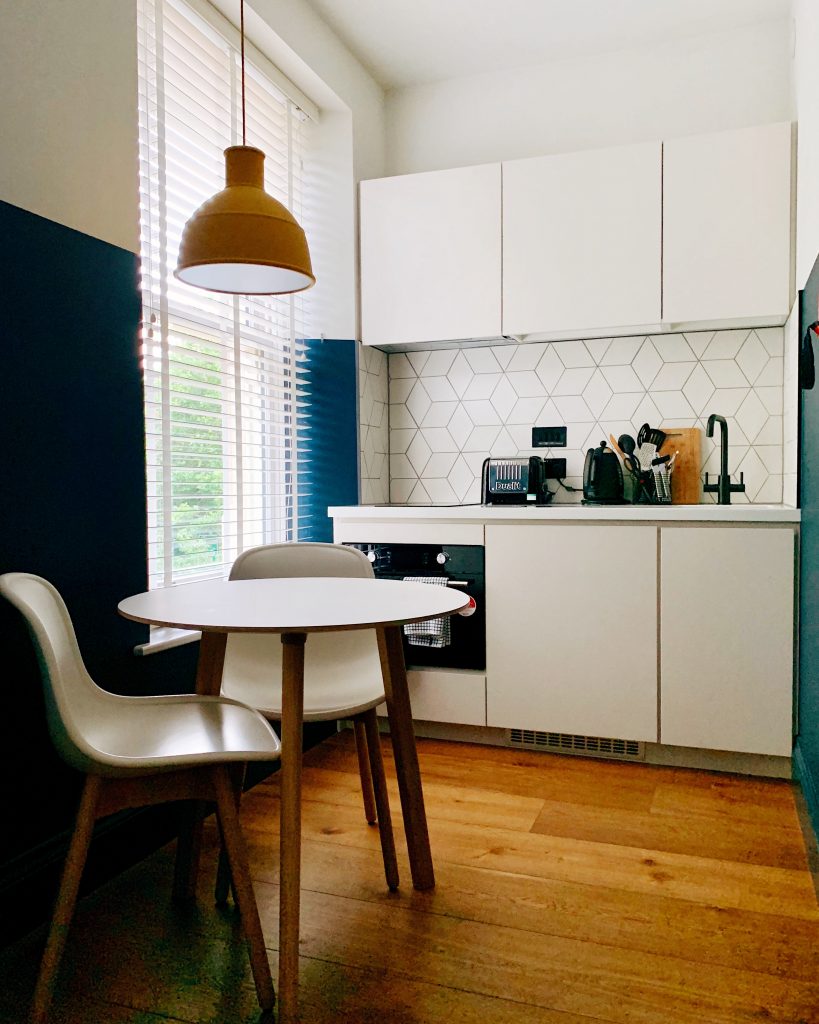
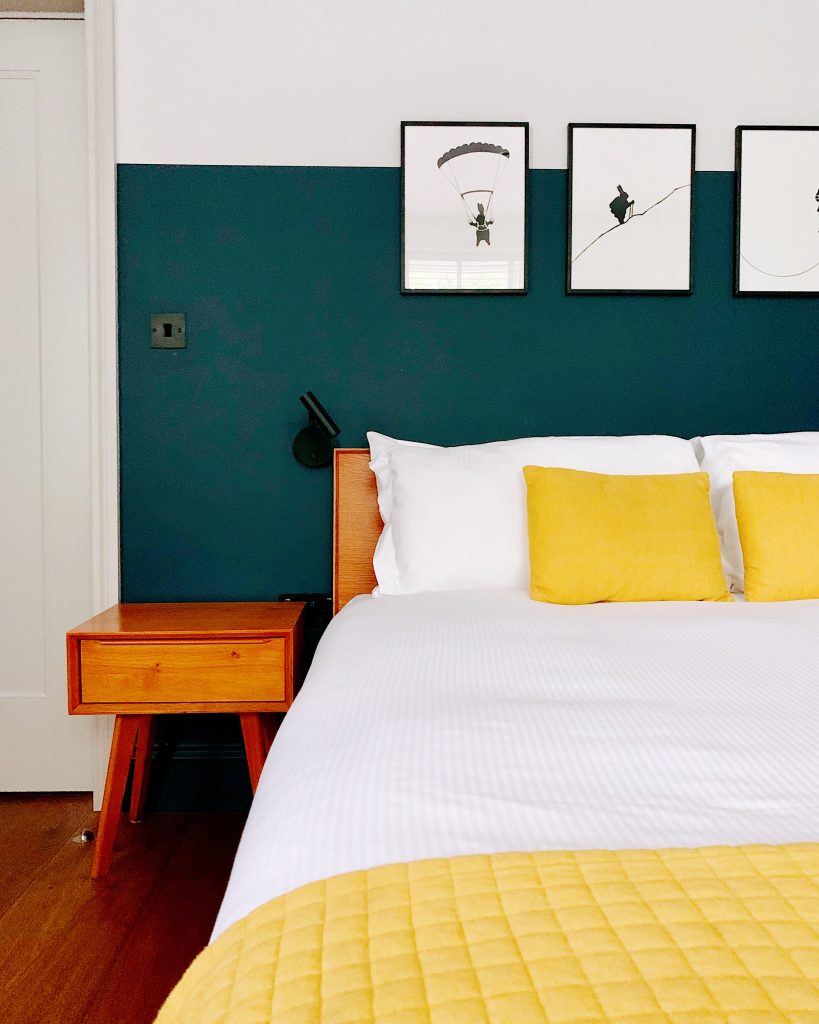
The truths about colour psychology
There have been fascinating discoveries about colour psychology recently. First, we have to take a step back from the interior design world and have a look at how colours can influence other aspects of our lives.
Below you will find the “truths” about colour psychology. These are findings that have been supported by several studies, as reviewed by A. J. Elliot (2015). Note: each of these “truths” is also contradicted by a smaller number of studies. Unfortunately, that’s as solid as colour psychology gets.
- Humans are faster at spotting red targets compared to other colours
- Performing tasks under blue light leads to greater self-reported alertness and performance
- Wearing red improves performance in sport competitions
- Seeing the colour red before a challenging intelligence test decreases performance
- Men wearing red appear more dominant
- Seeing the colour red before a challenging intelligence test increases caution and avoidance
- Straight men rate women wearing red as more attractive
- Blue stores or logos appear to be more trustworthy
- Eating on a red plate has been shown to decrease food intake
Even though this list is likely to expand over time, this is as far as it goes right now. As O’Connor points out, “a range of studies exist which support a link between colour and human response; however, the findings are limited by, and contingent on, the setting and context of the study, the size and composition of the sample group, as well as the limited range of colours used in the stimuli.”
A headline-grabbing study doesn’t have much weight unless other experiments support its findings. That’s how science works. We need more research.
By the way, if you want to read more, A. J. Elliot published a revised review in 2018.
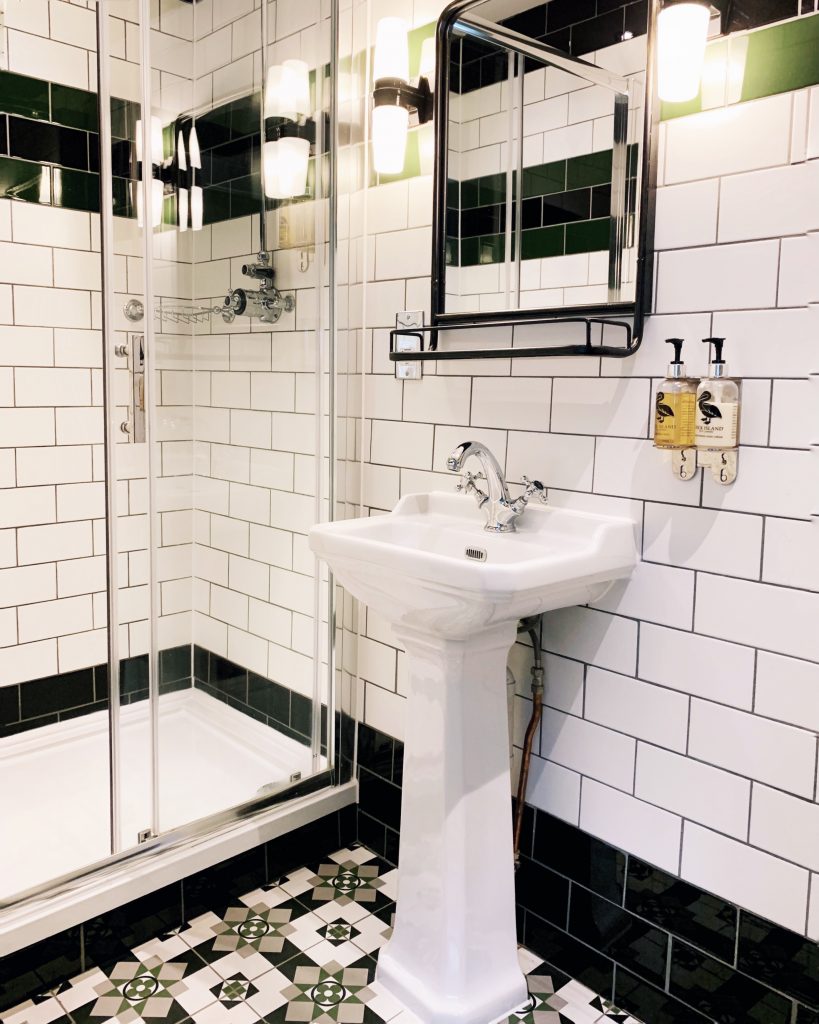
The myths about colour psychology in interior design
I’m not sure if you’re ready for this. This is the Matrix moment when Neo is offered two pills. The red pill leads to an unpleasant truth. On the other hand, the blue pill lets you live in blissful ignorance. The red pill is hard to digest because it challenges the current beliefs on colour psychology in interiors.
Are you ready? *Takes red pill*
Here’s what R. B. Tofle (2004)[PDF] found following a comprehensive review of the available studies. It’s interesting to mention the review was commissioned to study the effects of colour psychology in interior design (particularly healthcare settings).
1. Are colours linked to specific emotions?
As we’ve seen previously, research suggests colours influence human response. However, the existence of a definite universal causal link between a specific colour (or colour combinations) and psychological and behavioural responses has not been proven. It’s what scientists call an unsupported hypothesis.
As Tofle puts it, “colours do not contain any inherent emotional triggers. Emotional responses to colours are caused by culturally learned associations and by the physiological and psychological makeup of people.”
The influence of colour on your mood is pretty much real. But it’s the meaning you give to colours that can affect your mood in certain ways, not the colour itself.
You can’t prescribe colours to influence people’s emotional and mental state or their behaviour. Because, physiologically and psychologically, we are not hard-wired to respond that way. Tofle adds: “spaces do not become ‘active’, ‘relaxing’, or ‘contemplative’ only because of their specified color.”
However, some people respond to colour more than others
This is where colour psychology gets super interesting. It turns out some people are indeed directly affected by colour. This mechanism is led by autosuggestion. So, if you strongly believe a blue room is going to relax you… Guess what? It may relax you! Astrology works in a similar way for some people.
It’s not the colour itself, but the person’s strong belief system that influences their response. If that’s you, don’t let that stop you! But let’s keep colour psychology claims and science separate so each has its own space.
2. Do colours have a direct impact on your health or well-being?
There is not enough evidence to suggest painting walls in certain colours will have a positive impact on your health or well-being. For example, painting a room blue will not necessarily lower your blood pressure or help you recover from an illness.
3. Do warm colours make walls advance and cool colours make them recede?
It turns out some colour combinations can make a space feel bigger or smaller. This is not because of the colours themselves, but their brightness and contrast. The design rule that links warm/cool colours and spaciousness has not been proven.
Continue reading: how to make a small room look bigger (proven trick!)
4. Can we use universal colour psychology guidelines to design spaces?
Have you seen those Colour Psychology in Interior Design infographics on Pinterest? Black means sophistication, yellow means joy, etc. Again, all of them are cultural associations, biased by the person who created them.
We all have personal experiences with colour and grow up in diverse cultures. Therefore, we can’t just wrap it all up into a guide knowing people will react to colours in different ways. No universal science-backed guide exists for colour psychology in interior design.
5. Are the psychological effects of colour long-lasting?
We don’t know how long the psychological effects of colour last. It could be minutes, days, months or years. There could be an adaptation process, as some studies suggest, where these effects fade.
Could any of these become a “truth” one day? Maybe. But we have to prove them first, and let the scientific community scrutinise and replicate the experiments. And, there is not enough evidence to support any of the points above right now.
OK, I’m struggling to digest all this…
I’m with you. I have a solid background in the science of colour at an academic level. But when I started studying the evidence behind the science of well-being and colour psychology in interiors, I wasn’t expecting to find this. Tofle and her team were also disappointed, as all they wanted was to gather the evidence and come up with a pretty colour guide. It turns out there’s not much to gather.
As she puts it (rather bluntly): “the popular press and the design community have promoted the oversimplification of the psychological responses to color. Many authors of guidelines tend to make sweeping statements that are supported by myths or personal beliefs.” O’Connor adds: “such claims exhibit fundamental flaws and often refer to outdated research without referring to current research findings.”
It’s difficult (and painful) to separate facts and myths
We have to be open and honest and admit the information found on mainstream media and the internet can be ambiguous and biased at best. Even this blog was peppered with factoids on colour psychology!
Part of the confusion arises when we put cultural colour associations, personal colour symbolisms and preferences in the same pot. Then we add claims about the direct link between colour and human response without critical thinking. This is called subjective validation: when two unrelated events are perceived to be related because of an expectation of such.
And I get it.
We are very good at giving external factors, such as colour, more importance than what they deserve. That’s because we’re desperate for meaning. Desperate to find answers that align with our beliefs. And we’re also masters at blocking everything that may not be so convenient.
But this is science. It’s time to broaden our minds.
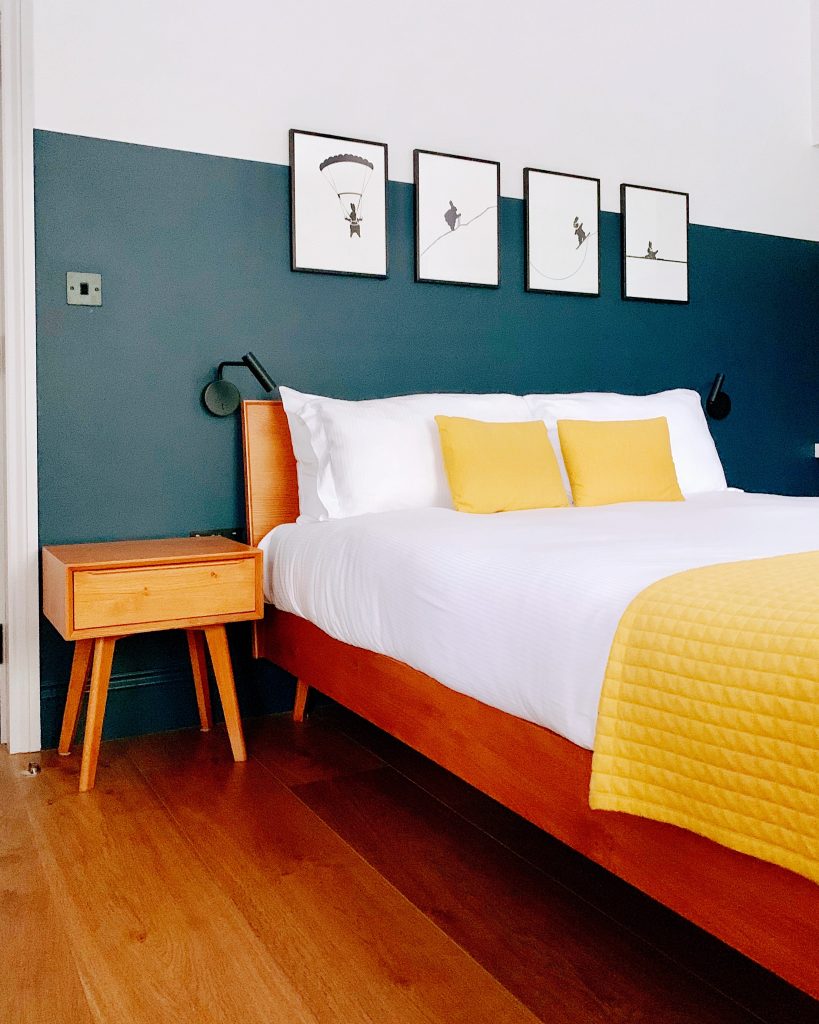
Colour psychology in interior design: how to decorate
Now we know the “truths” and myths about colour psychology in interior design we can take action. Knowledge is power and the fog has lifted. Remember, colours still can boost your mood! You just need to find your own “happy colours.” So, how do you do it? How do you find those colours? It’s easy.
Start by asking yourself “how do I want to feel in this room?” Simply decorate with the colours that resonate with you and make you feel great.
Each one of us has a unique colour psychology infographic in our heads. It may not be immediately obvious but look around your home and your wardrobe. You may find clues that will help you complete your very own colour guide. Find fresh inspiration outside the interiors world and open your mind to new colours.
Other questions to try include: what colours were present in your childhood? What holidays bring you happy memories? Where do you feel most at peace?
Feel free to experiment through trial and error — let the colours come to you!
It’s clear we give colour psychology in interior design too much importance. It’s worth exploring the colours that work for you and avoiding those that don’t. But that’s what interior design does anyway. Colour psychology is exciting. However, scientists agree it shouldn’t be the main consideration for interior design… just yet.
What about the colour psychology experts?
Colour experts have a deep understanding of colour and its meaning in our culture. A good colour expert will use their knowledge, not to specify colours for certain behaviours, but to guide you. To help you find the best colours for you based on your individual preferences and cultural environment.
Further reading: BBC Future – Medical Myths: do colours really warp our behaviour?
What do you think?
Okay, that was an intense blog post! Colour psychology in interior design is fascinating. And, as you can see, it has just started. I look forward to where this new science will take us. I promise I will be there for you to separate the facts from the myths.
What are your thoughts about colour psychology? Let me know in the comments below!


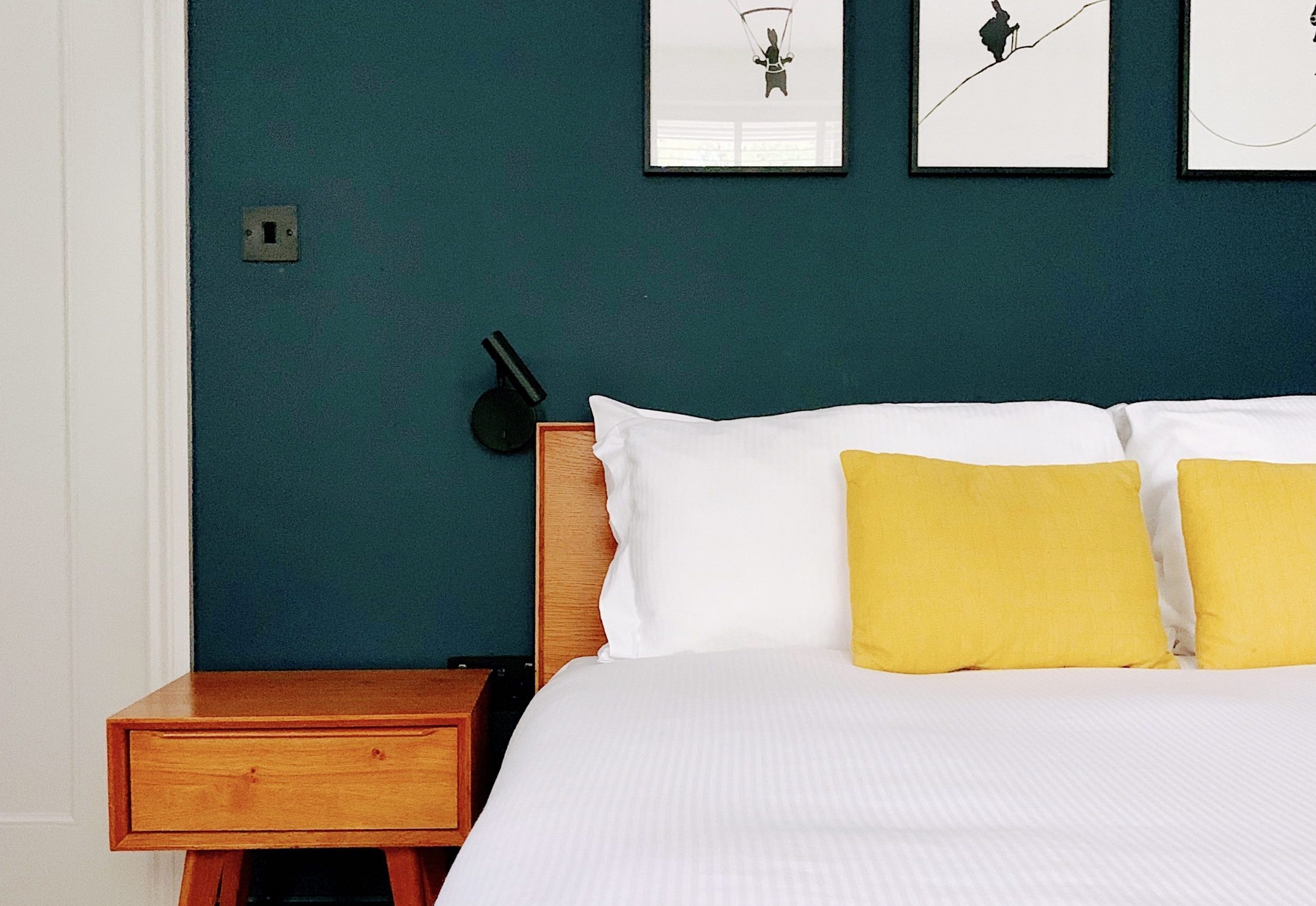
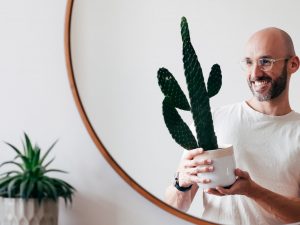
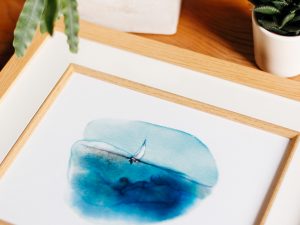

Louise Misell
•5 years agoA very interesting read Juan! I am in total agreement that colours have an effect on us, but as individuals, not en masse. Our reactions to colour are a mix of cultural and personal associations, so choosing the right colours for yourself and your environment is still hugely beneficial.
Juan Sandiego
•5 years agoThank you for your comment, Louise! I completely agree with you. Honestly, I was rather disappointed at first. But then I realised interior designers had been doing it “the right way” all along by using a person-centred approach to their work. Helping people discover their “happy colours.”
Jumi Awomosu
•5 years agoAmazing article with some interesting ideas to consider. Colour is often down to association.- Do we feel blue because of the blue that surrounds us or do we feel calm because we are reminded of the calming waves of the sea xx A question I often consider. Maybe it all depends on which shade of blue we are talking about! or maybe it depends on that person and their own unique experiences! xx
Juan Sandiego
•5 years agoThank you for your comment, Jumi! You’re right. There are so many variables. Visual perception is a complex phenomenon, which makes repeating these studies very difficult. I think these findings are quite positive, though. Colour is a completely unique experience for each of us!
Lenord
•5 years agoThis is a great read. Never knew colours impact us to this extent. I hope more people get educated about impact of colours on their psychology- this will help in taking better decision when they are painting their rooms and also help them in their wellbeing.
Juan Sandiego
•5 years agoThank you for your comment, Lenord! Colour psychology is fascinating indeed. At least now we now the the facts and the common misconceptions.
Claire Gaudion
•5 years agoThanks for writing this article, Juan. I too am fascinated by colour and am continually exploring colour psychology and Biophilic colour for Interiors within my textile design work. Colour psychology research is limited for sure, and so many articles frustratingly focus on main colour families (hues such as red or blue) without any regard for the nuances of tones or the complexities of how colours interact with their neighbours and surfaces, colour memories and proportions of colours. Colour is individual and colours are in constant flux. These are notions that I explore with students on my online colour course. Have you discovered the work of Angela Wright, Stephen Kellert and Josef Albers? …These are my colour / psychology / biophilia research heroes! Thanks again for a refreshing read about colour!
Juan Sandiego
•5 years agoThank you for your comment, Claire! You’re absolutely right. It is indeed a very complex phenomenon that’s not easy to simplify. Colour psychology research is advancing fast in the marketing world. As you say, there are various colour theories aimed at interiors even though more research is needed. It’s wonderful to think how special and unique our relationship with colour is. Thanks again for reading and providing the insight of a colour expert.
Andrea curtis
•5 years agoHi Juan
I loved reading this ! However having studied applied colour psychology with Angela Wright – ( she is a world renowned colour psychologist) and wrote the Wright Theory which explores our psychological connection to colour and how by using a combination of the hues and different tones of colours you can in fact affect behaviour – I’d disagree with some of what you’ve written.
I would agree however that the way I see ‘colour psychology’ discussed on a lot of social media platforms is misleading and a bit superficial. It’s really not as simple as just surrounding yourself with certain colours that you like; its much more subtle and complicated than that. After all this is ‘psychology’ and so goes much deeper than people think – it’s not enough to just identify our ‘colour season ‘ and then simply picking colours from that group. Colour psychology all starts with you as a person and as we all know we are complex and are affected by many different influences.
Juan Sandiego
•5 years agoThank you for your comment, Andrea! I appreciate you taking the time to join the open conversation and share your views. I see we both agree the meaning of colour psychology and colour symbolism are often mistakenly interchanged (including by me in this very blog in the past!) I’m truly enjoying studying the topic. It’s fascinating.
Montserrat
•5 years agoGracies Joan per totes les teves explicacions, ens fa pensar amb moltes coses respecta els colors, a mi el que en passa es que hi han records de petita o al llarc de la meva vida que els colors m’han influid per be o per mal, però també han fet que en definis molt amb els meus colors preferits, uns son per el meu entorn relaxant i els altres son per el meu armari….Petons
Juan Sandiego
•5 years ago¡Gracias por comentar, Montse! Nuestra relación con los colores es muy personal, como tú bien dices. Es como los aromas, que te recuerdan ciertos momentos o personas. También pueden cambiar de significado con nuevas experiencias, pero su influencia en nuestro estado de ánimo es personal.
John
•5 years agoThanks for sharing this article, Juan. I also agree that colours have an effect on us. Colour sets the mood for a home’s interior and conveys how you want the space to feel.
Juan Sandiego
•5 years agoThank you for your comment, John! Indeed, our relationship with colour is very personal and unique.